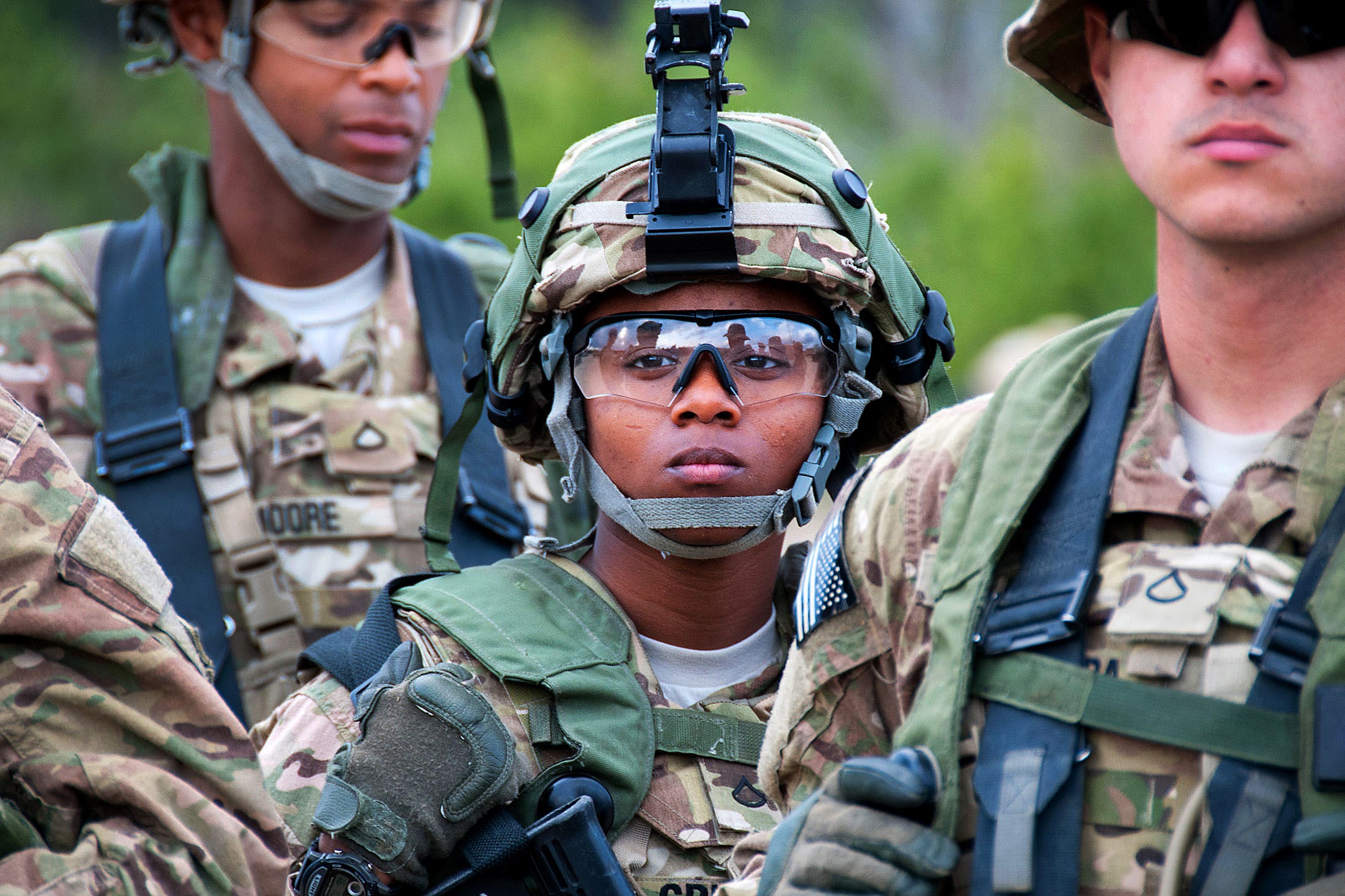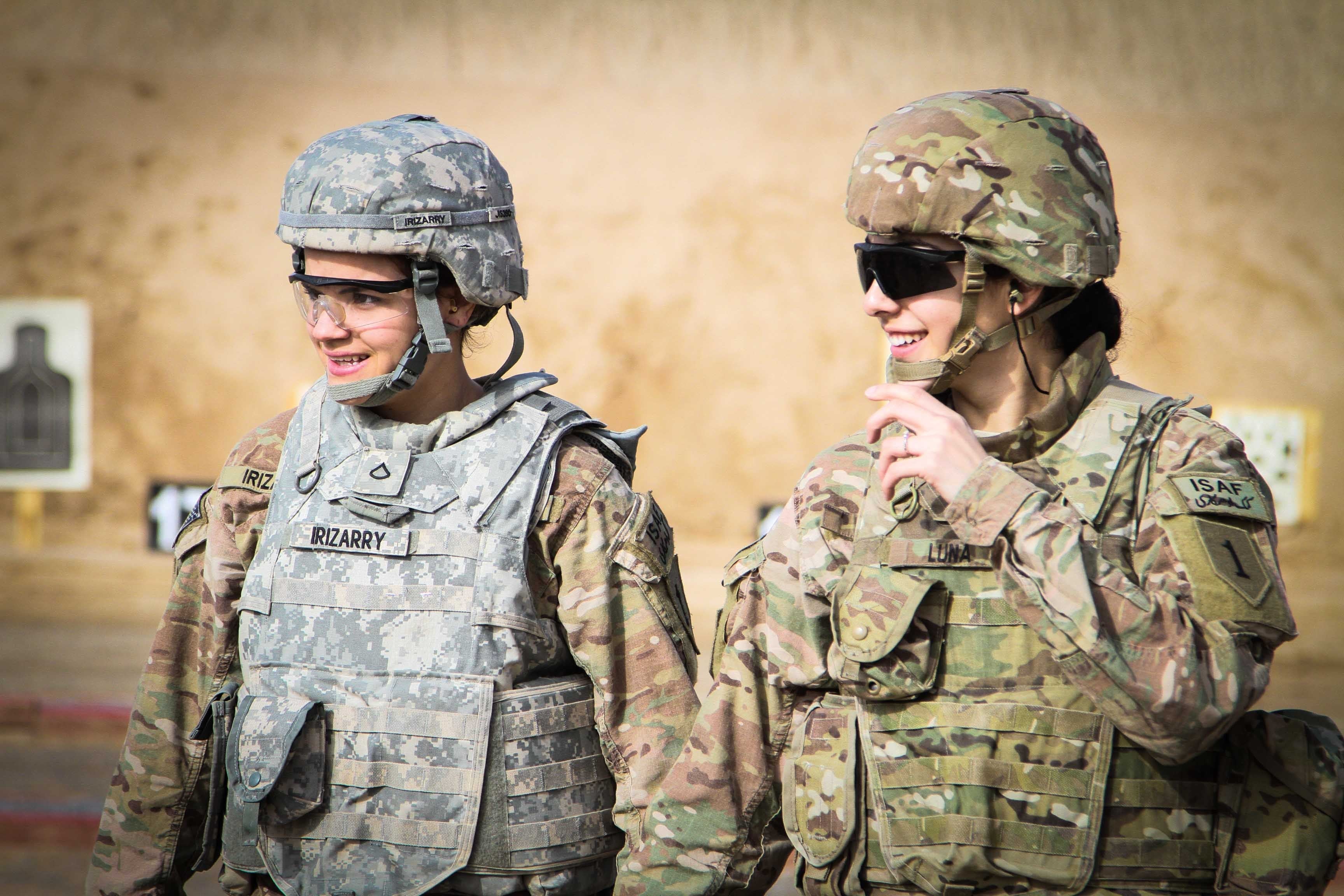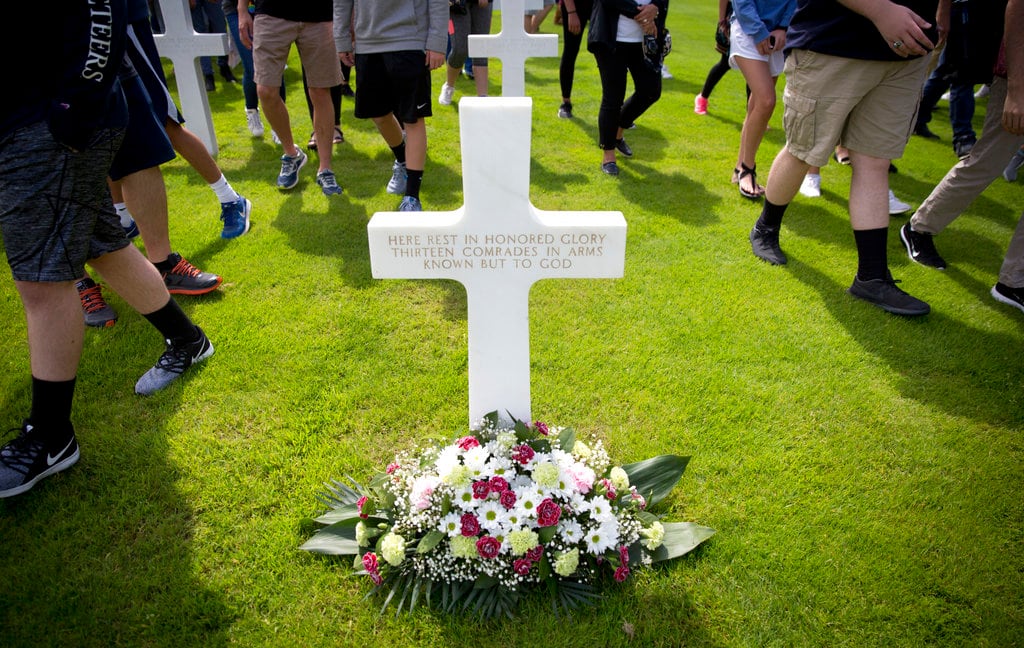Women will soon be able to join the ranks of the Army's infantry, armor and special operations units.
Defense Secretary Ash Carter on Thursday announced his decision to lift all gender-based restrictions on military service starting in January, paving the way for women to serve in these previously all-male specialties.
The decision opens nearly 220,000 jobs across the military — that's about 10 percent of the force — to women. It also will open all of the remaining Army MOSs that had remained closed.
A closer look at new jobs that will soon open to women:
Infantry
This is the Army's largest MOS. The active Army alone has about 62,000 infantrymen. Combined, all three Army components have about 100,900 infantry soldiers in the ranks.
This includes infantry officers (11A), infantrymen (11B), indirect fire infantrymen (11C) and infantry senior sergeants (11Z).
The move also effectively opens the 75th Ranger Regiment to women, provided they meet the regiment's requirements.
Armor
The size of the armor force wasn't immediately available, but the MOSs affected are armor officer (19A and 19B), cavalry officer (19C), cavalry scout (19D), armor crewman (19K) and armor senior sergeant (19Z).
Forward observer
The 13F MOS was the only field artillery job that hadn't been opened to women.
Officials wanted to make a decision about the 13F MOS alongside the infantry and armor specialties because forward observers often are embedded with infantry and armor units.

The Army has until Jan. 1 to provide DoD with a detailed plan on how to open the remaining MOSs to women.
Photo Credit: Sgt. Michael J. MacLeodh/Army
Special Forces
The elite Green Beret ranks also will open to women.
The MOSs are Special Forces officer (18A), Special Forces warrant officer (180A), Special Forces weapons sergeant (18B), Special Forces engineer sergeant (18C), Special Forces medical sergeant (18D), Special Forces communications sergeant (18E), Special Forces assistant operations and intelligence sergeant (18F) and Special Forces senior sergeant (18Z).
SOCOM commander Gen. Joseph L. Votel and his senior enlisted adviser Command Sgt. Maj. William F. Thetford assured the force in a video statement that they studied very carefully the decision to not seek to keep closed any special operations jobs.
"Highly successful operators come in all shapes and sizes," Votel said, citing SOCOM's "time-tested" selection process, experienced leadership and mature approach as ways to mitigate concerns about integrating women.
Thetford emphasized that SOCOM will maintain its "rigorous training and standards."
"They've proven to bring the right people into our community," he said. "Our standards are and will continue to be the gatekeeper to service in our special operations career fields and units. The bottom line, our standards have worked for decades, and we are not going to change them."
In light of Thursday's announcement, it's difficult to say how many of the nearly 220,000 jobs that will soon open to women are Army jobs, said Lt. Col. Pat Seiber, an Army spokesman.
"The force drawdown and continued force structure changes will affect any final numbers," he said.
So far, between May 2012 and October 2015, the Army has opened about 95,216 positions and nine occupations to women, Seiber said. This includes the combat engineer (12B) and cannon crewmember (13B) MOSs.
The Army also conducted a gender-integrated assessment of and later opened its storied Ranger School to women. Three women have graduated from the course and earned the coveted Ranger tab.
The Army has been assessing barriers to service for women since 2011 using an "incremental and methodical approach," Seiber said.

Two female soldiers walk back after checking their targets at a qualification range on Kandahar Airfield, Afghanistan, in March 2014.
Photo Credit: Cpl. Clay Beyersdorfer/Army
This includes conducting a gender-integration study, which looked at institutional and cultural factors associated with gender integration, and a task-assessment study that looked at physical factors, according to information from the Defense Department.
"Women have been fighting, bleeding, dying and conducting heroic actions alongside men for the past 14 years," he said. "Women in combat is nothing new."
The Army is about to take a "historic step," retired Gen. Gordon R. Sullivan, a former Army chief of staff and president of the Association of the United State Army, said in a statement.
"The key will be how this is implemented, with a goal of making changes that improve the force, without quotas, and keeping in mind that policy changes don't eliminate any physical differences between men and women," he said.
Retired Lt. Gen. Guy C. Swan III, a vice president at AUSA, said he believes Carter's decision is "the right thing to do for the United States Army."
"The most important thing in all of this is the maintenance of standards. I think we all agree with that," Swan said. "The biggest concern I think women soldiers would have is that somehow the standards were lowered so they could meet a standard or participate as full team members."
Implementing this change will require leadership at all levels, from noncommissioned officers and officers alike, Swan said.
"It comes down to a standards-based Army, and at the end of the day, the non-negotiable factor is a combat-ready Army that can fight and win the nation's wars," he said. "That doesn't matter if you're male, female, gay, straight, black, white."
The Army and the other services now have until Jan. 1 to provide DoD with "final, detailed plans" on how they will integrate the newly opened occupations and positions, according to information from DoD.
Positions will be open "as soon as practicable" following the required congressional notification period and in accordance with final, approved service implementation plans, according to DoD. The services must be ready to execute those plans no later than April 1.
Michelle Tan is the editor of Army Times and Air Force Times. She has covered the military for Military Times since 2005, and has embedded with U.S. troops in Iraq, Afghanistan, Kuwait, Haiti, Gabon and the Horn of Africa.





